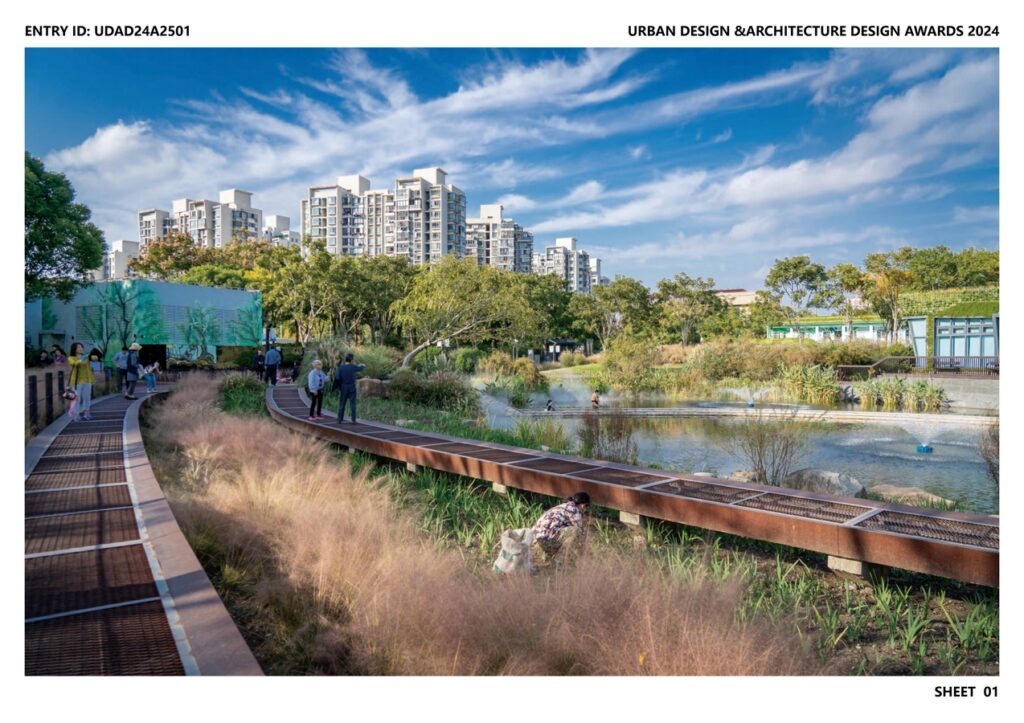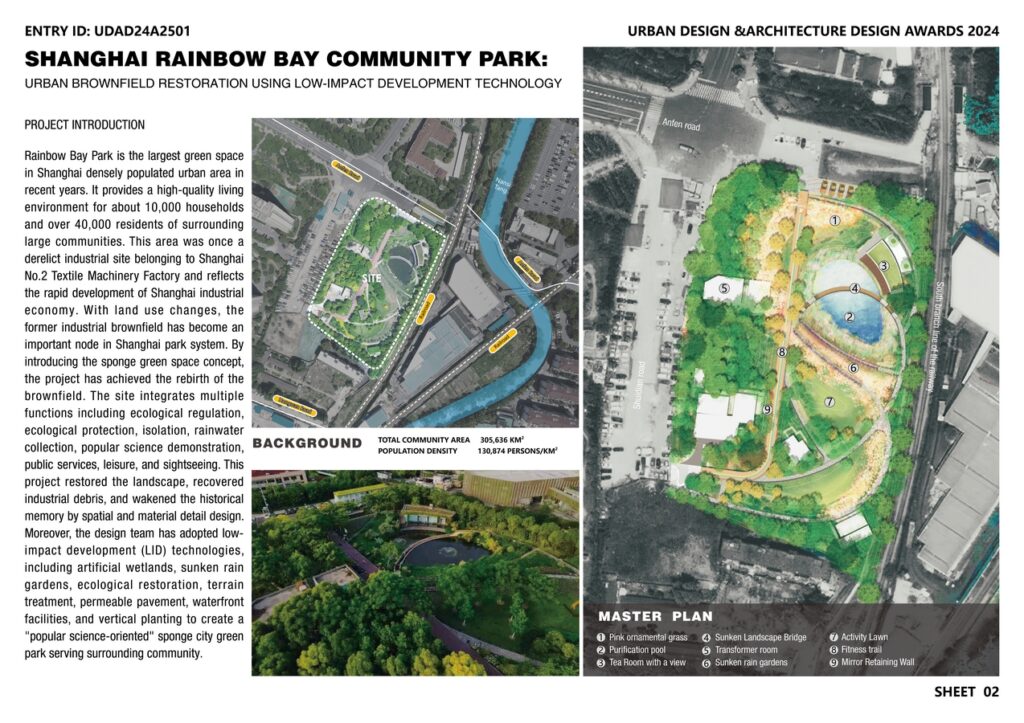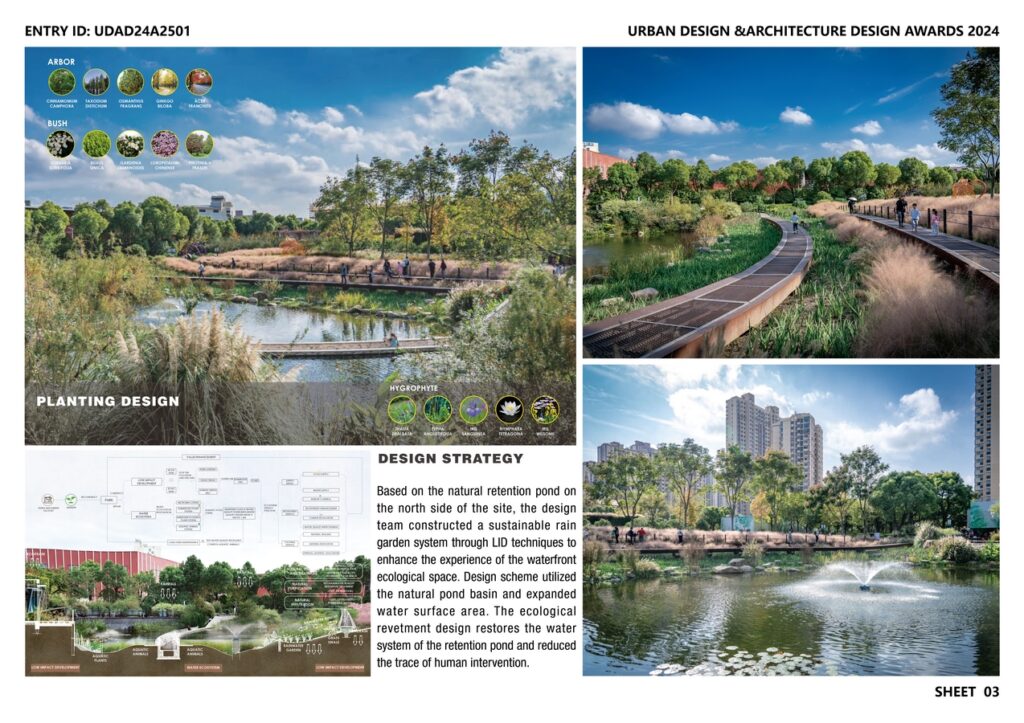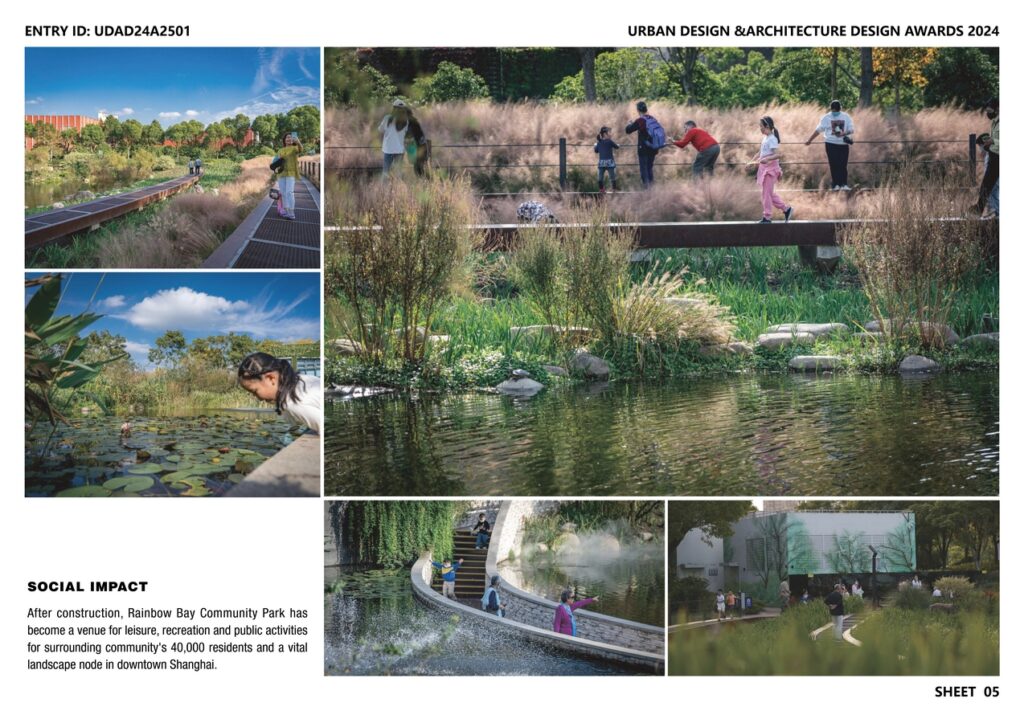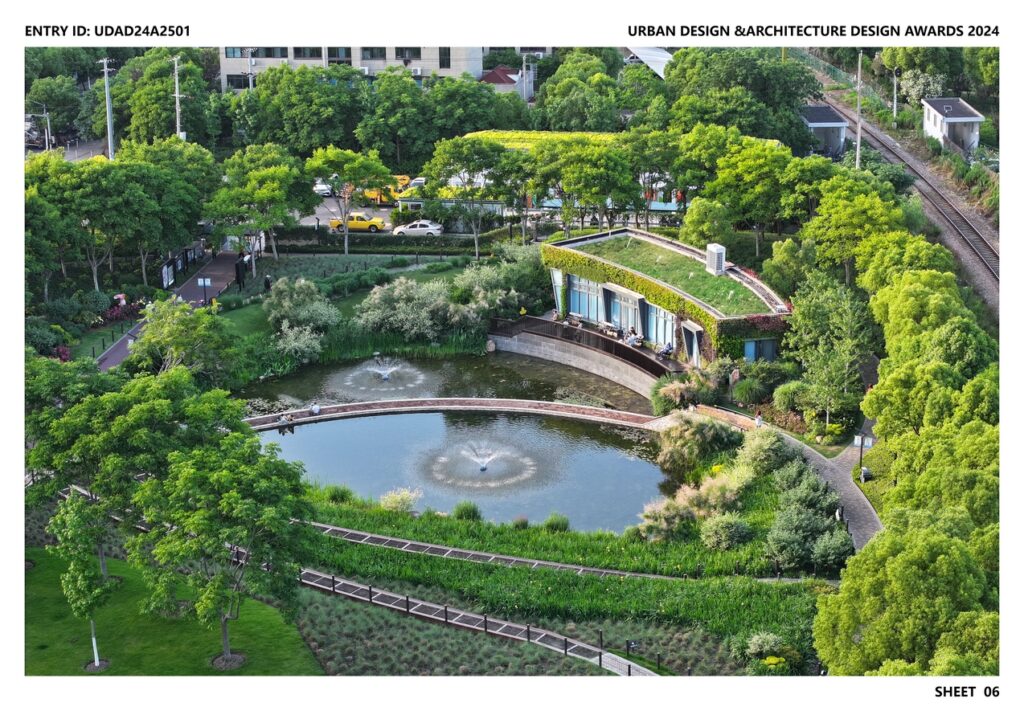Existing Conditions & Challenges
Rainbow Bay Park was an abandoned factory site of Shanghai No.2 Textile Machinery Factory. With city planning and land use changes, the surrounding area has been developed into the largest high-density community in Hongkou District. The size of the retention pond of the park limited its self-purification capacity. Surface runoff containing road grease and garbage polluted the water quality, leading to severe eutrophication and ecological damage like outbreaks of blue-green algae.
Urban Design & Architecture Design Awards 2025: Entries Open!
Take your work to the next level. Register Now…
Gold 🏆 Winner
Urban Design & Architecture Design Awards 2024
Shanghai Rainbow Bay Community Park: Urban Brownfield Restoration Using Low-Impact Development Technology
Public Landscape Architecture (Built)
Firm
SLADI / HCET Shanghai
Architect/Designer
An Du
Design Team
An Du, Xiaoye Xia, MengBiao Qi, Xiaolan Wu,Wei Zhuang, Wen Li, Ciyi Huang, Yuanwei Xu, Chengyu Qian, Wei Shi, Yantong Liu, Jian Lu, Hui Weng, Wenji Wang, Beibei Jing
Location
Shanghai, China
Country
China
Photographer/Copyright
©SLADI / HCET Shanghai
Design Strategy
The design team constructed a sustainable rain garden system through LID techniques to enhance the experience of the waterfront ecological space. The design scheme utilized the natural pond basin and expanded the water surface area. The ecological revetment design restores the water system of the retention pond and reduced the trace of human intervention. Considering the topography of the piled-up earthwork excavated for water surface expansion and the revetment design, a sunken rain garden was created on the south side according to the terrain. With aquatic and wetland plants, the rain garden filtrates and stores rainwater collected from the surrounding area, effectively purified and retained rainwater. Through sophisticated planting design and innovative vertical planting, tremendous ground buildings of substation and facilities are hidden among planting.
Ecological Water Restoration
By developing organic interaction between soil, artificial media, plants, and microorganisms to treat sewage and sludge, a water environment suitable for aquatic plants’ growth is developed. Composite microorganisms are used to improve water quality and increase water transparency. Aquatic animals are introduced to optimize and stabilize the underwater ecosystem. The project injects sufficient dissolved oxygen into the water through an aeration and circulation system to restore the broken food chain. As a result, the water quality has been maintained at Class IV standard, with water transparency exceeding 1.3m while pre-construction water quality was below Class V standards with 20cm water transparency.
Planting Design
The layered plant community configuration model includes “nearshore and terrestrial plants, coastal-emergent wetland plants, shallow emergent wetland plants, floating plants/submerged plants”, forming a well-organized wetland softscape. Moreover, the park takes advantage of seasonal characteristics to create two significant, memorable plant landscapes, with Iris tectorum blooming in spring and Muhlenbergia capillaris blooming in autumn, providing leisure and viewing spot for community visitors.
Construction of Waterfront Facilities
Inspired by two railway lines close to the site, the design team constructed two curved permeable flower-viewing decks on top of the sunken rainwater garden, connecting green space and the retention pond. Rusty steel plates and galvanized mesh panels pavement reflect the industrial memory. The sunken waterfront deck crossing the artificial wetland is the highlight of the entire design. It is loved by surrounding residents, especially children.
The Social Impact
After construction, Rainbow Bay Community Park has become a venue for leisure, recreation and public activities for the surrounding community’s 40,000 residents and a vital landscape node in downtown Shanghai. The project integrates multiple functions including ecological regulation, ecological protection, isolation, rainwater collection, popular science demonstration, public services, leisure, and sightseeing. Rainbow Bay Community Park allows the former industrial brownfield to be reborn and keep growing with a new mission.




